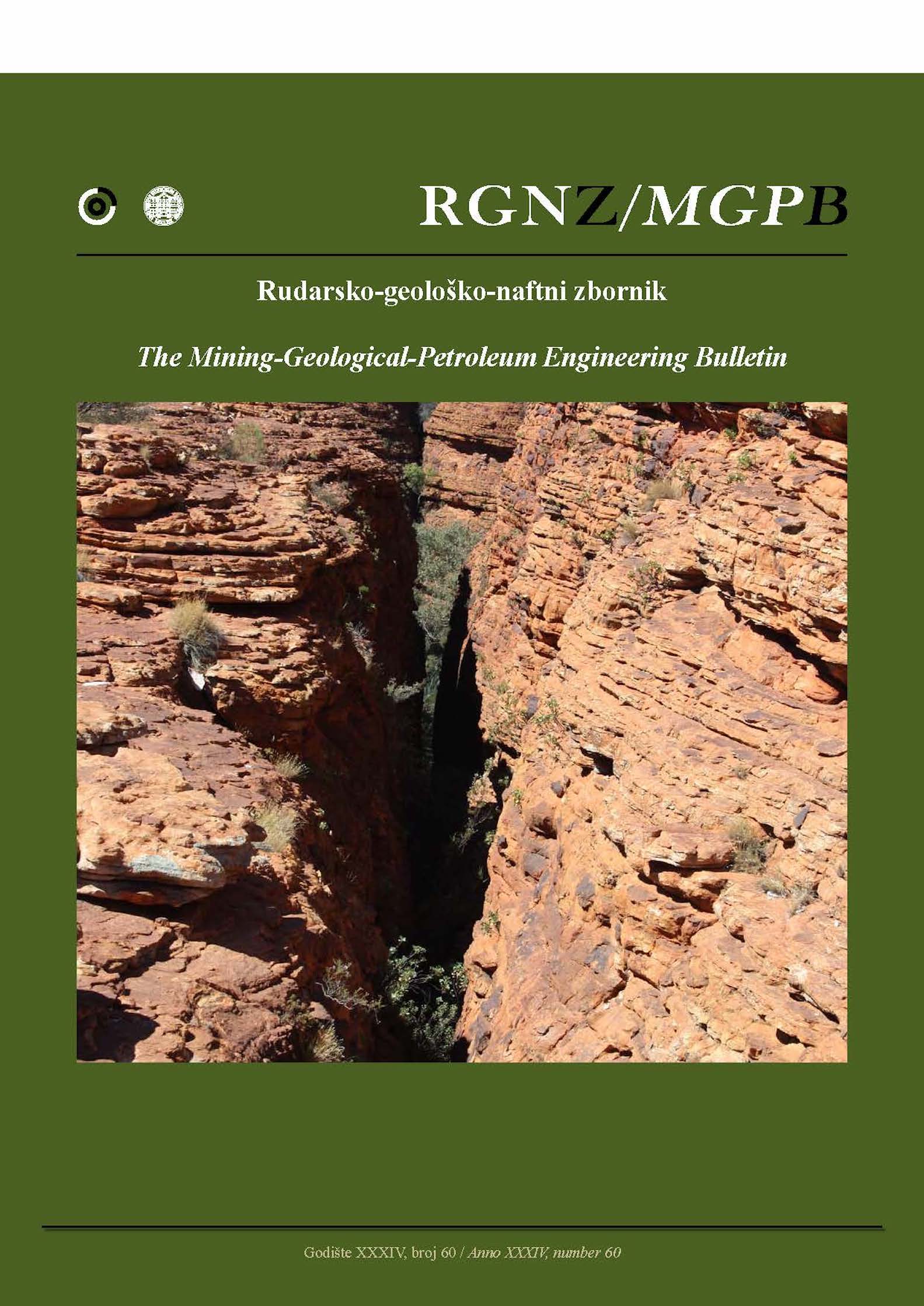Comparative analysis on impact of water saturation on the performance of in-situ combustion
DOI:
https://doi.org/10.17794/rgn.2022.4.14Keywords:
enhanced oil recovery, thermal, saturation, in-situ combustion, numerical modellingAbstract
The amount of oil together with the water Originally in Place (OIP), makes up the liquid phase in heavy oil reservoir systems. This amount of liquid present in the pores of the reservoir system is known as liquid saturation, plays a vital role in improving oil recovery through In-Situ Combustion (ISC) process. The oil phase acts as fuel in generating thermal energy required for viscosity reduction and the water phase supports in the formation of an enlarged condensation zone that aids in higher mobility of the low viscous oil. A numerical investigation is carried out to study the role of water saturation on the performance of in-situ combustion in a heavy oil reservoir. A finite-difference based numerical model is developed and validated for water recovery. The model is then used to carry out the impact of liquid saturation on the performance of the ISC, as it plays a vital role in screening criteria for the selection of ISC. The numerical results projected a significant effect on the thermal and production profile during the process. A comparison between the effect of variation in water and oil saturations projected a significant increase in reservoir temperatures with increased water saturation than the oil saturation. The highest reservoir temperatures are observed at the maximum liquid (oil and water together) saturation. Further, the additional water drive provided by increased water saturation is observed to contribute to early production rates.Downloads
Published
How to Cite
Issue
Section
License
Copyright (c) 2022 authors and journal

This work is licensed under a Creative Commons Attribution 4.0 International License.
Creative Commons-BY
Authors who publish with this journal agree to the following terms:
In agreeing this form, you certify that:
- You read the ethical codex of the RGN zbornik available at journal web.
- You submitted work is your original work, and has not previously been published and does not include any form of plagiarism.
- You own copyright in the submitted work, and are therefore permitted to assign the licence to publish to RGN zbornik.
- Your submitted work contains no violation of any existing copyright or other third party right or any material of an obscene, libellous or otherwise unlawful nature.
- You have obtained permission for and acknowledged the source of any illustrations, diagrams or other material included in the work of which you are not the copyright owner.
- You have taken due care to ensure the accuracy of the work, and that, to the best of your knowledge, there are no false statements made within it.
- All co-authors of this submitted work are aware of, and in agreement with, the terms of this licence and that the submitted manuscript has been approved by these authors.
Publication licence
You retain copyright in your submitted work, according to journal license policy (CC-BY). By signing this form you agree that RGN zbornik may publish it under the publication licence. In summary the licence allows the following:
Anyone is free:
- To copy, distribute, display, and perform the work.
- To make derivative works.
Under the following conditions:
- The original author must always be given credit.
- The work may not be used for commercial purposes.
- If the work is altered, transformed, or built upon, the resulting work may only be distributed under a licence identical to this one.
Exceptions to the licence
In addition to publishing the work printed under the above licence, RGN zbornik will also enable the work to be visible online.
The journal editorial can change the licence rules anytime but it cannot retroactively restrict author(s) rights.


